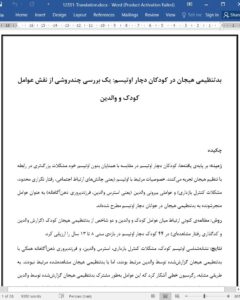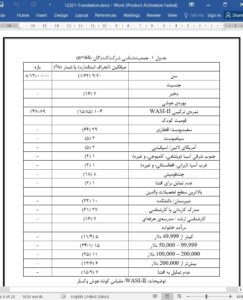Abstract
Background Children with autism have been found to experience greater difficulties with emotion regulation than peers without autism. Characteristics related to autism (i.e., social communication challenges, restricted repetitive behaviours, inhibitory control difficulties) and external parent factors (i.e., parent stress, mindful parenting) have been suggested to contribute to the emotion dysregulation (ED) experienced by youth with autism.
Method The current study evaluated associations between child and parent factors and two indices of child ED (parent report and observational behaviour coding), in 44 children with autism, ages 8–13 years.
Results Child autism symptomology, inhibitory control difficulties, parental stress and mindful parenting were all associated with parent reported ED, but not with observed ED. Similarly, linear regressions revealed that these factors jointly predicted parent reported ED, but not observed ED. Restricted interests/repetitive behaviours and inhibitory control difficulties emerged as unique positive predictors of parent reported ED.
Conclusions Findings highlight the importance of using a multimethod approach and of considering child- and parent-level factors when investigating ED in children with autism.
1. Introduction
Children with autism often experience co-occurring depression, anxiety, or anger as a result of difficulties with emotion regulation (Cai et al., 2018), with many meeting criteria for at least one co-occurring mental health disorder (Salazar et al., 2015). Emotion regulation is described as “the extrinsic and intrinsic processes responsible for monitoring, evaluating, and modifying emotional reactions, especially their intensive and temporal features, to accomplish one’s goals” (Thompson, 1994, pp. 27–28). Difficulty employing these processes leads to emotion dysregulation (ED; Weiss, Burnham Riosa, Mazefsky, & Beaumont, 2017), which can present as tantrums, outbursts, and sustained negative responses (Samson et al., 2014).
4.2. Conclusion
There is a need to better understand emotion regulation difficulties experienced by children with autism, considering the implications that ED has for mental health and wellness. The different patterns of association found between observed and parent reported ED in the current study highlight the importance of employing a multimethod approach when exploring factors that contribute to child emotion regulation and of carefully considering how various measurement methods may elicit different experiences and abilities. While associations were found between parent reported ED and child and parent factors, these same patterns were not found for observed ED during a frustrating lab task, suggesting that the factors contributing to ED for children with autism may vary across contexts. Our findings suggest that autism characteristics, parental stress, and mindful parenting are important factors to consider when exploring emotion regulation.











